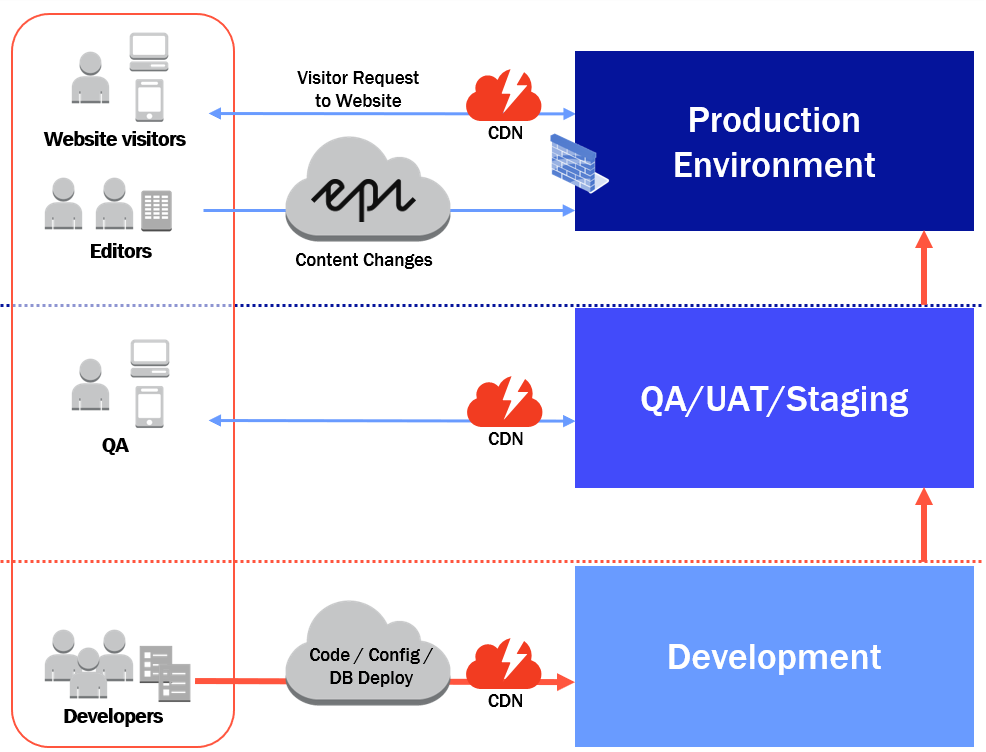While some parents would prefer their children live with them forever, others seek drastic measures to force an empty nest such as the parents who recently won a court case to evict their 30-year-old son. In the workplace, there’s another relationship dynamic that could change for the better with a little distance and trust.
Despite the need to update sites to reflect everything from sales to product selection, marketers and merchandisers are often forced to make the changes they need to a website in a staging environment, waiting for IT colleagues to move those updates into the production environment (what the end consumer sees). Or worse, changes to the website require IT to modify code or to write new code entirely. In these common scenarios, IT is necessary for daily and weekly changes in marketing and merchandising programs and those responsible for products and promotions do not have direct control of their commerce experiences. If someone wants to do a product campaign, for example, they are at the mercy of IT to move it live – creating unnecessary delay and disconnect.
In 2018, IT is still worried about letting colleagues into their commerce platforms for fear it will slow down site performance and that non-technical colleagues will mess up a system they ultimately have to fix. Today, there are systems that allow business users to log into the production environment without impacting site traffic and to the benefit of companies. With easy-to-use features, workflows and version control, and dedicated web applications for merchandizers in the production environment, non-technical business users can benefit from some freedom. Like parents, IT will have to trust they have done their job to prepare them well.

Dedicated Web Applications
One of the chief complaints of commerce platforms is that they are difficult to use. This is often because commerce systems do not have a content management system (CMS), which means they lack tools to easily change content. What dedicated web applications do is solve the performance issue while mitigating risk. Admins can set roles and permissions while governing approval workflows in the production environment versus trying to make changes outside the system.
Today, being competitive is about how fast a business can launch a campaign or promotion or add new products. Some companies complain about weeks or months to make changes because they are so limited in their platform, which means they are leaving revenue on the table. If marketers and merchandisers can do more campaigns themselves, they can increase sales.
Personalization
Retailers going from one campaign because of IT delays can easily go to dozens when they are able to make changes themselves. Are they going to do the same campaign 12 times? Probably not, which lends itself to a more mature marketing strategy when campaigns start to be tailored to new visitors, returning visitors, etc.
When business users have the power to make changes, specialized campaigns are the results based on pure ability. Consumers can start to be targeted more by who they are, what they want to do on the site, how they got there and where they are showing intent. When consumers have a more personalized experience, conversions improve.
Strategic Control
Like a teenager would get the keys to the car but perhaps with a location-enabled device, IT can set up strategic controls for their commerce platforms. While people can go anywhere in a system, it does not necessarily mean they should. Admins can create varying levels of permission in the commerce system – not unique to a CMS but a differentiator in commerce – so that some editors cannot even access certain sections or are completely restricted to making certain assets like promotions or banners. Commerce systems should allow such deep roles and permissions that approval processes and quality checks are effortless including the ability to ‘revert to published site,’ should it be needed.
Democratization of Experience Management
Empowering and trusting employees to contribute to the digital experience can help in many areas. For one, by allowing team members to create content in a commerce environment, it reduces the creative burden of just one person coming up with copy, image ideas and promotions. The ability to reuse assets helps reduce that burden even further while helping to keep branding consistent.
THE FUTURE IS NOW
Eighty-seven percent of shoppers are OK with companies knowing more about them to personalize their shopping experience, but marketers and merchandisers can’t use what they know if they are forced to wait weeks or months for a site change. Systems exist to allow retailers to do in a commerce platform what content marketers do in a CMS. There was a point when IT’s concerns were valid, but now the controls are there to unlock the value of having multiple commerce authors in the production environment. Before the holidays, IT can enable marketers and merchandisers to make measurable and testable changes to the site that can be reverted should they be necessary. Marketers will never leave the basement to soar on their own, if IT doesn’t trust the systems they put in place preparing them for the real world.
Ed Kennedy is the senior director of commerce at Episerver
